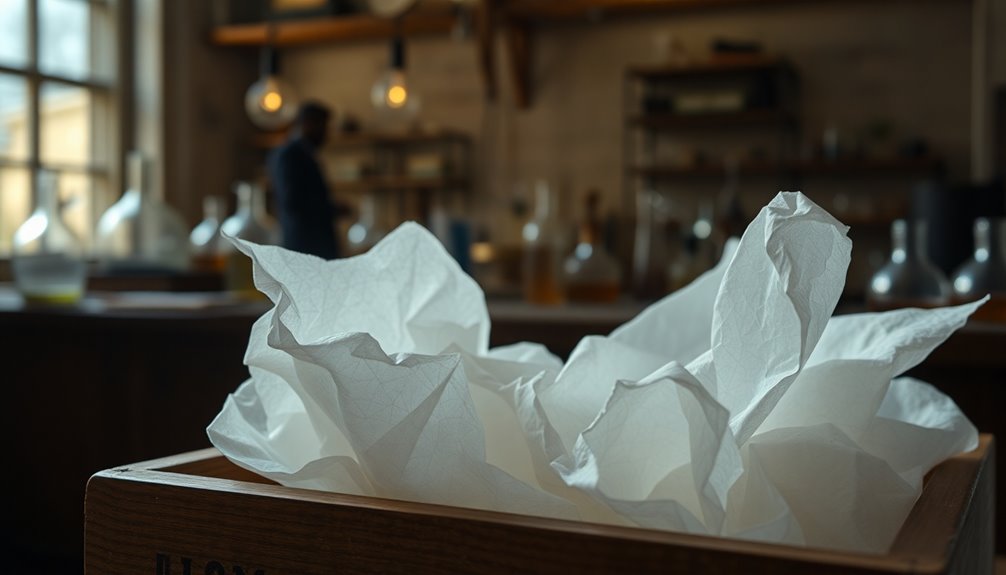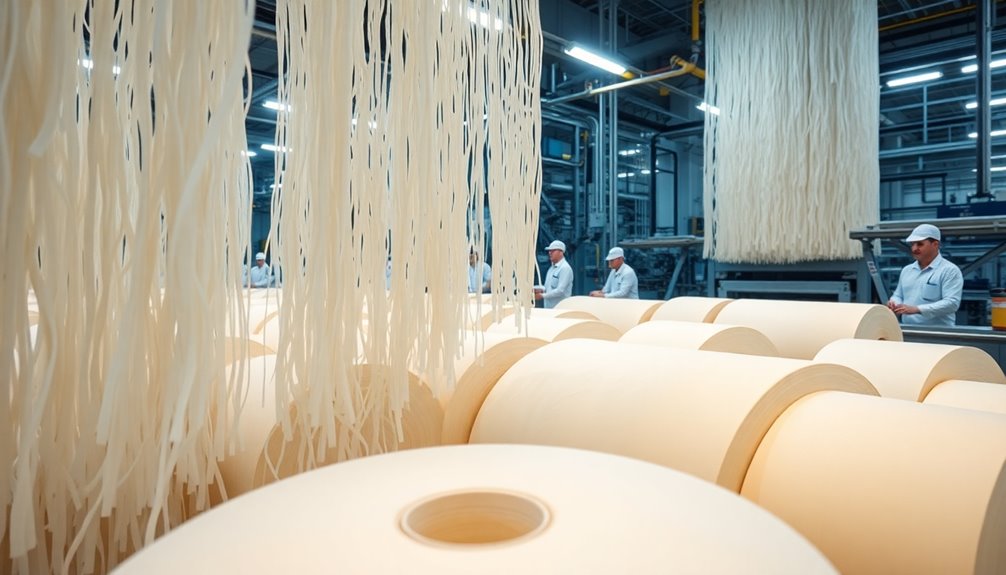Tissue paper's origin is more intricate than you might think. While Joseph Gayetty first launched commercial toilet paper in 1857, its roots stretch back to 6th century China, where paper was initially used for personal cleansing. Over the years, innovative companies like Kimberly-Clark and Kleenex revolutionized tissue products, enhancing their softness and absorbency. The focus on sustainable practices and ethical sourcing has transformed production methods, reflecting modern consumer values. From personal hygiene to healthcare, tissue paper continues to evolve. You'll find the layers of this story reveal even more fascinating details about its development and impact.
Key Takeaways
- The first recorded use of paper for personal cleansing dates back to 6th century China, marking the beginning of tissue development.
- Joseph Gayetty introduced the first commercial toilet paper in 1857, revolutionizing personal hygiene products.
- Kimberly-Clark's innovations during World War I set new standards in tissue manufacturing and product variety.
- The launch of Kleenex in 1924 transformed disposable tissue products, expanding their use beyond personal cleansing.
- Continuous advancements in manufacturing techniques, like the creping process, have significantly improved tissue softness and absorbency over time.
Revolutionary Tissue Innovations Revealed
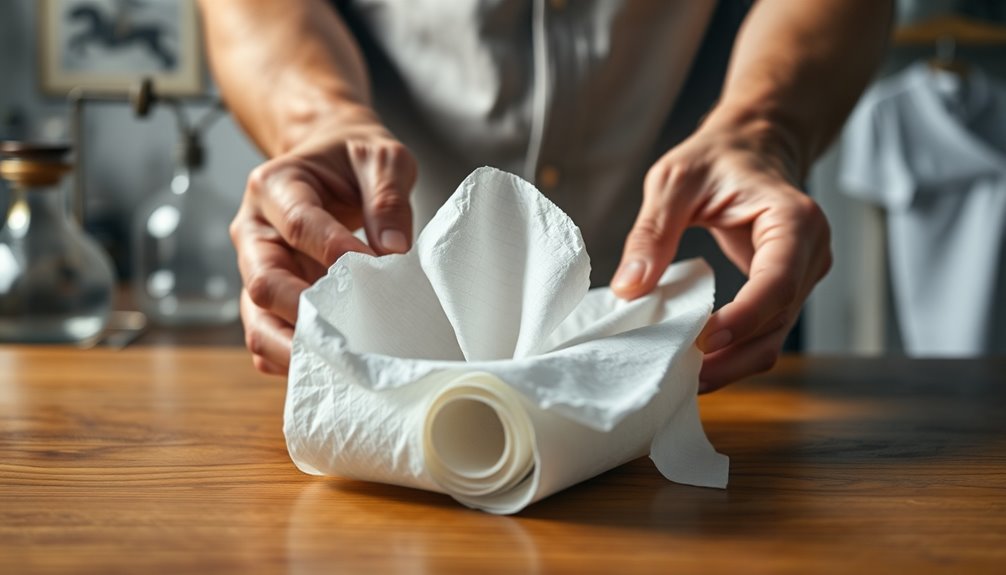
Throughout history, innovations in tissue products have dramatically changed our daily lives. One of the most significant milestones was the introduction of the first commercial toilet paper by Joseph Gayetty in 1857, which set the stage for personal hygiene advancements. During World War I, Kimberly-Clark further propelled tissue products' innovation, fostering a range of new manufacturing techniques and expanding product varieties.
A game-changer was the creping process, introduced to enhance the softness and absorbency of paper. This technique revolutionized tissue production, making it more appealing to consumers and driving increased demand. In 1924, Kleenex emerged as a disposable handkerchief, fundamentally altering how you and others use tissue products. Its convenience quickly made it a household staple.
The late 1960s brought even more advancements with new forming technology developed by Valmet. This innovation significantly boosted manufacturing efficiency, allowing for higher product quality and greater output. As a result, you now enjoy a variety of soft, absorbent tissue options that cater to your daily needs, all thanks to these revolutionary innovations in the tissue industry.
Tissue's Evolution Through History

The evolution of tissue products has unfolded over centuries, reflecting changing hygiene practices and consumer needs. It all began in 6th century China, where an Arab traveler noted the use of paper for personal cleansing, showcasing a preference for tissue over water. Fast forward to 1857, when Joseph Gayetty introduced commercial toilet paper, marking the launch of mass-produced tissue products specifically designed for personal hygiene.
The landscape of tissue products continued to shift significantly during World War I, thanks to Kimberly-Clark's innovations. Their creping process improved tissue softness and absorbency, setting new standards in the market. In 1924, the introduction of the first disposable handkerchief, Kleenex, transformed consumer habits and laid the groundwork for the modern tissue industry.
Sustainable Tissue Production Methods

As the tissue industry evolved, so did the focus on sustainability in production methods. Today, manufacturers are prioritizing sustainable practices that significantly reduce environmental impact. For instance, many companies recycle waste paper and utilize renewable resources during production, making the entire process more efficient and eco-friendly.
Innovations like eco-friendly fibers and chemical-free processes are changing the game, minimizing water usage and energy consumption. By investing in closed-loop systems, tissue manufacturers can recycle water and cut down their carbon footprint, aligning with global sustainability goals.
Consumer demand for sustainable products is driving this change, prompting you to seek out biodegradable materials and packaging options. As companies respond to your preferences, the shift toward more environmentally responsible tissue products becomes evident.
Ongoing research into alternative raw materials, such as bamboo and other fast-growing plants, further enhances the sustainability of tissue production. These materials not only maintain quality and performance but also contribute to a healthier planet. By choosing sustainable tissue products, you support a movement that respects our resources and prioritizes the environment.
Ethical Implications of Tissue Sourcing

Ethical implications surrounding tissue sourcing have gained significant attention in recent years, driven by heightened awareness of environmental and social issues. As you navigate your choices in personal hygiene products, it's crucial to consider how resource extraction impacts both the planet and communities. The rapid growth in consumer demand for soft, absorbent tissue has pushed manufacturers to prioritize manufacturing efficiency, often at the expense of sustainable practices.
You might be surprised to learn that innovations like Kimberly-Clark's advancements during World War I didn't just improve production; they also raised pressing questions about the environmental impact of sourcing raw materials. As you evaluate different products, think about the ethical responsibility manufacturers have in balancing consumer preferences with sustainable sourcing. The introduction of new technologies, such as Valmet's forming technology, has improved efficiency but underscored the importance of responsible sourcing practices.
Engaging with brands that prioritize sustainability can help drive change in the industry. By choosing products with ethical sourcing, you're not just satisfying your own needs but also encouraging manufacturers to adopt practices that respect both the environment and the communities involved in resource extraction.
Tissue Innovations in Healthcare
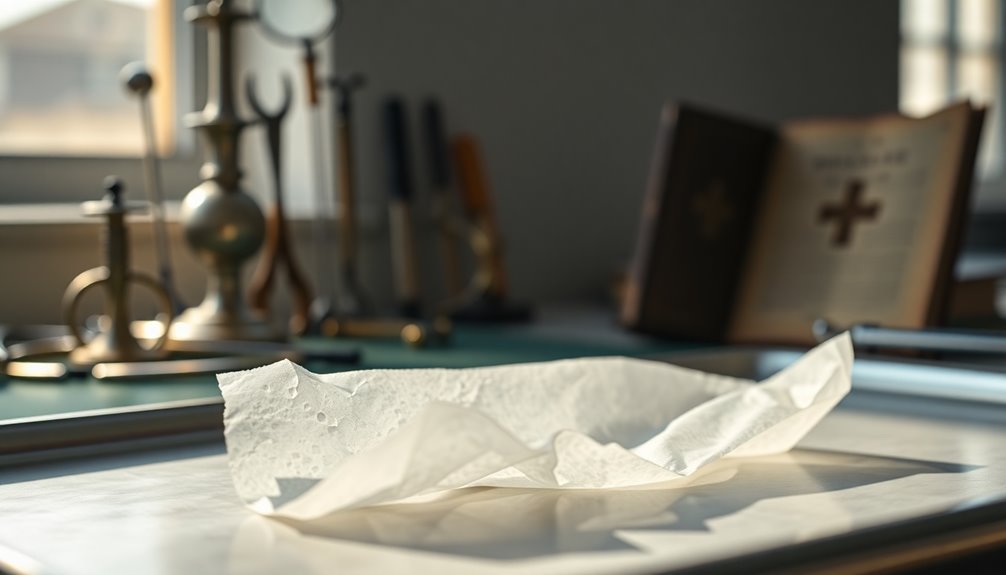
Innovative tissue products have significantly transformed healthcare, enhancing both patient comfort and hygiene. Since Joseph Gayetty introduced commercial toilet paper in 1857, tissue innovations have continually shaped medical practice. The creping process developed during World War I by Kimberly-Clark improved the softness and absorbency of tissue products, making them indispensable in hospitals and clinics.
Kleenex's introduction in 1924 as a disposable handkerchief expanded the role of tissue products beyond personal cleansing, allowing healthcare workers and patients to maintain cleanliness effortlessly. The launch of Kotex in 1920 marked a breakthrough in women's health, showcasing how tissue products could address specific needs effectively.
Today, ongoing innovations focus on layering sheets to enhance absorbency and create stronger, softer products that cater to consumer demands. These advancements not only improve personal hygiene but also contribute to overall patient care in healthcare settings. As tissue products continue to evolve, their role in promoting comfort and cleanliness remains pivotal, ensuring that both patients and practitioners benefit from these essential innovations in healthcare.
Innovative Tissue Design Breakthroughs
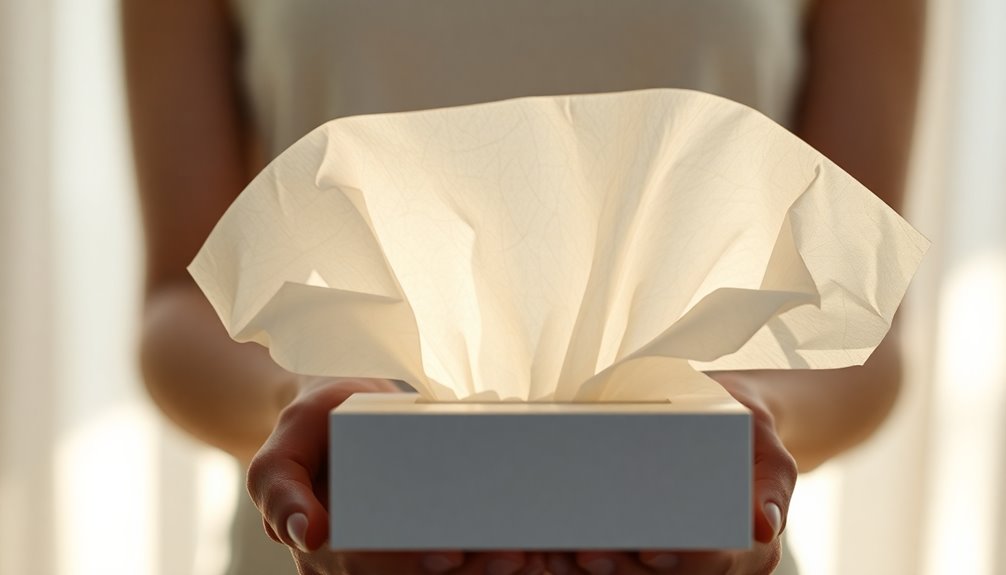
The evolution of tissue products has continually sparked groundbreaking designs that respond to consumer needs and enhance functionality. One of the most significant breakthroughs occurred with the creping process, which was invented to improve softness and absorbency in the early 20th century. This innovation not only transformed tissue design but also contributed to its rapid popularity. Kimberly-Clark further pushed the envelope during World War I, introducing innovative tissue products that laid the groundwork for modern manufacturing practices.
A landmark moment in tissue design was the development of Kleenex in 1924. This disposable handkerchief epitomized convenience and hygiene, making it a staple in households everywhere. Over the years, innovations in layering sheets have led to enhanced absorbency, addressing consumers' evolving demands for comfort and effectiveness.
In the late 1960s, Valmet introduced new forming technology that significantly improved tissue product quality and manufacturing efficiency. These innovations have collectively shaped the tissue industry, making it more responsive to user needs and setting the stage for future developments. As you explore these breakthroughs, you'll see how innovative tissue design has consistently elevated everyday experiences.
Frequently Asked Questions
Who Was the Inventor of Tissues?
When you think about the inventor of tissues, you might first consider Joseph Gayetty, who introduced the first commercial toilet paper in 1857. However, the evolution of tissue products didn't stop there. Kimberly-Clark's innovations in the early 20th century, particularly with the creation of Kleenex in 1924, transformed the market by introducing disposable handkerchiefs. This development enhanced convenience and hygiene, showcasing how tissue products have evolved over time.
Who Is the Founder of Paper Tissue?
You're diving into the fascinating world of paper tissue! The founder of commercial toilet paper is Joseph Gayetty, who introduced his product in 1857, marketed as "Gayetty's Medicated Paper." However, the concept of paper for personal cleansing dates back to 6th century China. Over the years, innovations like the creping process and the launch of Kleenex in 1924 transformed tissue products, making them an essential part of daily life.
What Was Kleenex Originally Designed For?
Kleenex was originally designed as a disposable handkerchief in 1924, offering you a convenient and hygienic alternative to cloth variants. Marketed as a "facial tissue," it aimed to help you remove makeup thanks to its softness. Initially created from surplus crepe paper from gas mask filters, its popularity skyrocketed when it was later rebranded for colds and allergies, revolutionizing how you approach personal hygiene with disposable products in daily life.
Who Invented the Tissue Box?
You might be surprised to learn that the tissue box, as we know it, was popularized by Kimberly-Clark in the 1960s. This innovation responded to consumer demand for a more convenient and hygienic way to access tissues. Before that, tissues were sold in flat formats, but the introduction of the pop-up dispenser made it easier for you to grab a tissue when you needed one, enhancing usability and cleanliness in your daily life.

